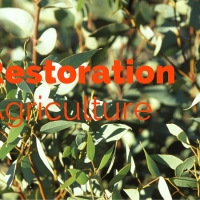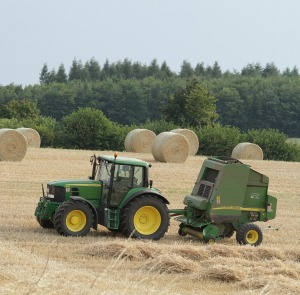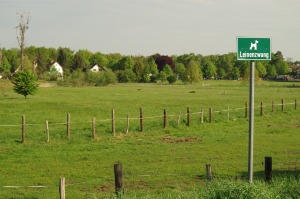

Restoration Agriculture – Need of the Hour!

In this brief article we take a look at the history of agriculture in the last century and see if we can start to find answers to these two vital questions involving the future of agriculture on the planet earth. We hope to motivate you to think about this topic just enough that you might want to learn more about it, and maybe even become a part of what might be the “Revolution of Restoration Agriculture”!
Internationally, the concept of agriculture got a big boom and some height exposure after World War II. People around the world started thinking about the development of farming and agriculture in a serious manner. For a better understanding, one can simply say that in this era, the whole process of working to raise crops and agriculture turned to become an industry.
Agriculture became an emerging industry as the world had honest concerns to feed the world. Just like we had an industrial revolution we were now having an agricultural revolution. The agricultural values were so marketed and deliberately evoked that at times, the agricultural producers were even asked to get big or get out. People were fighting against all types of harms and diseases caused by the insects and other pests to the agricultural crops. These damages were a big concern and people were also considering producing repeatedly over the same land that they had (minimal to no rotation of crops or leaving land fallow – “not farmed”)
 There were companies that started to work for facilitating the modern agriculturists. The main focus of these such companies was to bring something into the world of agriculture that brought a revolution. Their interest was to work on ideas and research that created potential growth into the market.
There were companies that started to work for facilitating the modern agriculturists. The main focus of these such companies was to bring something into the world of agriculture that brought a revolution. Their interest was to work on ideas and research that created potential growth into the market.
People started to believe they were essential for the agriculture industry. This sort of viral ethics were practiced just to make sure that their research found something important and useful, as much as to make the industry realize their importance. This led to considering them as a vital or important product manufacturers for their agricultural influences.
The ideas were so generic at that time. Everyone seemed to be interested in working on crops that produced higher yields per acre,or either practicing any such techniques or processes that allowed them to put in less effort and gain higher yields. More and more companies were doing research for this specific purpose. This was the revolution that everyone was working so hard to ensure, production of the agricultural industry to produce more.
This was all about the green Revolution and hence we saw the world starting to move on a moderate pace towards the green revolution; an agricultural shift.
This green evolution was hence used to produce more and the ideas to spread like a viral subjectivity. After that (now), the agricultural industry is facing consequences and harm which might account for the fall of industrial agriculture. Standalone proportioned machines that were once thought to make the production more efficient by allowing planting and harvesting of huge fields, actually began to do harm the environment. The contribution of the fertilizers, pesticides, chemicals or all such equipment and tools has made soils, water and air suffer greatly.
The impacts that started showing up were immense and compact in the soil, formed a dense hardpan under the topsoil which started to prevent crops from accessing deeper nutrients. The huge fields that stretched for miles and miles through the area were ripe to erosion. Indeed, there was very little topsoil left in most of the prime agricultural regions. By the use of such intense chemicals and such other products in the farms and agricultural lands, what soil was left was often dead or lifeless, killed by the herbicides and pesticides.
Today, people have started working for the Restoration of agriculture which might be the vital need of the hour!
So what is this Restoration Agriculture? Well, that question could have a complex answer. However, simply, it involves the restoration of land to be used for farming to a status that it was in before the current exploitation by humans in this Green Revolution. It involves taking a historic perspective of how the land was farmed for thousands of years in a sustainable manner.
One concept of restoration agriculture calls for the reconstruction of agriculture in which perennial systems replace annual plantings that expire in one season, leaving behind with some excretions of toxic runoff and carbon emissions. Some reasonable researchers and experts say agriculture must be ecological agriculture or else it will not persist.
 The benefits of the restoration of agriculture are reduced cost in seed, gasoline or diesel fuel, and tractor maintenance along with immensely improved soil, nominal tillage, larger capacity for photosynthesis, and an astonishing divergence of yields over a greater period of time. Agriculture restoration still produces all the carbohydrates, proteins and oils that we need for our food. But it is much easier to manage and maintain, since it does not require repetition tillage, replanting, reapplying fertilizer, pesticides, herbicides, fungicides, etc., which are necessary with the need of the hour.
The benefits of the restoration of agriculture are reduced cost in seed, gasoline or diesel fuel, and tractor maintenance along with immensely improved soil, nominal tillage, larger capacity for photosynthesis, and an astonishing divergence of yields over a greater period of time. Agriculture restoration still produces all the carbohydrates, proteins and oils that we need for our food. But it is much easier to manage and maintain, since it does not require repetition tillage, replanting, reapplying fertilizer, pesticides, herbicides, fungicides, etc., which are necessary with the need of the hour.
We look to make Restoration Agriculture a new “Revolution” in the agriculture industry. Some people are looking forward as innovative new agriculture techniques (urban agriculture, indoor agriculture, etc.) begin to incorporate with restoration agriculture. Once established, this molding of the old with the new might cause the input costs of the infrastructure for the restoration agriculture system to approach zero.
This is all very exciting. If you would like to know more about the concepts and practices of Restoration Agriculture Click Here to register for our free webinar and receive our ongoing series of articles, webinars, videos and audio information.
We offer workshops and have practical internships and apprenticeships available on a limited basis. Please Click here to get more information about these opportunities for knowledge and applications.
To learn more about sustainable agriculture and Aquaponics, or to obtain information on DIY system and how to get seeds please contact us Click here to book a meeting with us or contact us at 303-495-3705.
Please put down your comments in the comment box below or on our Facebook page, and let us know your thoughts. It would inspire us for our future blogs. We’d really appreciate it if you like our page as well.
Source: Nourish the Planet
References and Related Articles:
- Future of Agriculture & Farming In The United States
- Restoration Agriculture Systems for San Diego County – The Permaculture Research Institute
Restoration Agriculture Review - William Carey International Development Journal
- Mark Shepherd on Restoration Agriculture
- Factors Affecting Economic Growth & Development of an Industry







